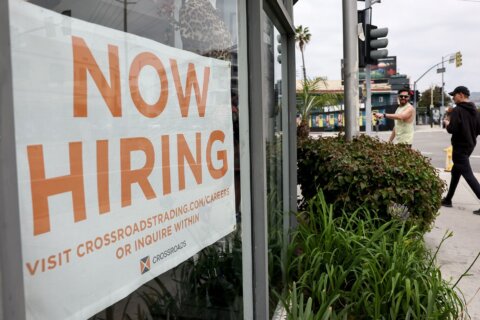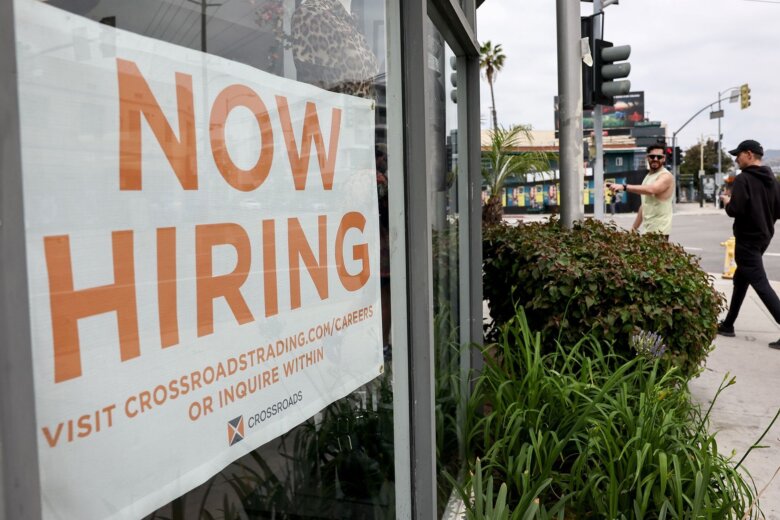
New York (CNN) — Wall Street has a lot to worry about — recession and war in Europe, interest rate hikes, sticky inflation, and a softening US economy.
But there’s at least one sector of market euphoria keeping investors optimistic: artificial intelligence.
Last Thursday, the S&P 500 entered a bull market — up 20% from its recent lows. In a note on Friday, Bank of America economists said the move upwards was mostly because investors have bought into a singular equity theme: AI.
“Recent developments in generative AI herald a sea change,” they wrote.
But the market’s strength has been mostly driven by a handful of mega-cap tech stocks, Alphabet
(GOOGL), Meta
(META), Apple
(AAPL), Amazon
(AMZN), and Nvidia
(NVDA). That’s why the tech-heavy Nasdaq (up 27%) and the S&P 500 (up 12%) are so much higher this year than the Dow Jones Industrial Average (up just 2%).
The returns from those five tech stocks this year are the largest we’ve seen in the past two decades, said Matt Bartolini, head of SPDR Americas research at State Street Global Advisors. This year, Nvidia’s stock is up 165%. Meta is up 120%. And Apple, Amazon and Alphabet are all up around 40%.
Before the Bell spoke with Bartolini about what the AI boom means going forward and whether investors should be weary.
This interview has been edited for length and clarity.
Before the Bell: AI is causing a big market boom right now, but that boom also seems to be concentrated in mega-cap tech stocks. Can that last?
Matt Bartolini: The stocks we talk about with the AI craze are all going to be tech related, and these large cap companies are the ones infusing AI and a lot of their capabilities. AI is a very nebulous topic, a lot of people just want to think of it as ChatGPT, but it can also refer to the predictive text on your iPhone.
It’s more about how technology has proliferated across different types of industries and consumer segments. We’ve seen a flight to quality this year that benefited firms that have sustainable, repeatable cash flows with sound balance sheets. And these mega cap tech conglomerates are those types of firms. So the rise in semiconductor stocks is definitely AI fueled, Nvidia being one of those, but I think this narrow market leadership speaks to trying to find companies that have good cash flow characteristics. And yeah, and those are just the largest firms.
A lot of companies are claiming to work in the artificial intelligence space. How can investors tell which companies are actually going to benefit from a potential AI boom?
That’s the hardest thing to do right now. We often see this happen during technological crazes. A Long Island iced tea company renamed itself ‘Long Island Blockchain’ and its stock soared 200%. Pets.com popped up in the dot com boom. It’s a song as old as time. If you look at the recent earnings transcripts from S&P 500 companies, the mentions of AI were everywhere.
So to some extent it’s just a buzzword companies use to gain notoriety and to infuse a bit of optimism into their forward guidance. Still, a lot of companies are using AI as a connective technology.
I hate to use the “B” word but I wonder if this is a bit of a bubble?
I don’t think we’re there yet. I’m not saying that we won’t be, but I think there’s some restraint to it. If there was a bubble you would see more retail investors using ETF structures to focus on specific themes or that have AI in their name. They’ve gotten a bit of inflow but not to the degree where you’d say ‘something’s up here.’
You also have a pretty narrow, myopic marketplace in terms of companies leading on AI. A lot of major tech stocks have done well, but smaller companies haven’t. In a bubble, you’d see a significant amount of stocks throughout the area benefiting.
What is happening is that AI has been around for a really long time, and now there’s a branding bubble, so to speak, where it’s the subject of a lot of press and general conversations around the dinner table. But I don’t think from a stock perspective we’ve reached a full scale bubble.
So what would you say to a Main Street investor who wants to invest in AI?
At the beginning of the year we identified semiconductors as an area of the market that was trading below its perceived fair value because of such poor returns in 2020. The entire industry was trading below its historical price to earnings ratio but now it’s trading above it.
What I would say to those investors is that if you’re looking to get into the AI industry, it’s really easy to get the theme call right but the stock call wrong. You buy a semiconductor stock, because you think it’s gonna be a home run, but maybe the firm has an accounting issue. So rather than buying single stock equities to play a theme, we have discussions with investors about using concentrated industry exposures that allow you to diversify that single stock risk. On average, stocks underperform by more than the sector average.
Everything you wanted to know about a bull market but were afraid to ask
The US entered a bull market last Thursday, finally. It took 165 trading days for the S&P 500 index to rise 20% above its recent low — the technical qualifier for a bull market. That makes this the second longest period between bull markets in nearly 75 years, according to Adam Turnquist, chief technical strategist for LPL Financial.
This bull market could be with us for some time. While the duration of previous bull markets have varied significantly, they’re typically long-lasting. Since 1929, the average S&P 500 bull market has lasted for 39.4 months — or a bit over three years — and produced an average gain of 130.1%, said Turnquist.
The short-term returns once markets have crossed that 20% threshold have also been strong. The S&P 500 has posted average and median gains of 18% and 19% in the 12 months after the index entered a bull market, he found.
A bear in bull’s clothes: A 20% lift from recent lows is generally accepted as the definition of the start of a bull market. However, there is no exact definition — and the current market situation is a bit more nuanced than the typical bull market-bear market binary.
If there’s a pullback or consolidation in tech stocks, markets could quickly plunge lower.
On the surface, Big Tech seems to be “solving” the market’s problems, but cyclical and smaller companies are suffering below.
This narrow market leadership by AI-adjacent tech stocks “is not a sign of a quality rally or bull market” and could lead to a market correction of some kind, warned James Demmert, chief investment officer at Main Street Research.
Still, participation in the latest rally has recently picked up and about 58% of all S&P 500 stocks are trading above their 200-day moving average, noted Turnquist. “This is a move in the right direction, especially with notable improvements in financial and energy sector breadth,” he said.
Central banks take center stage this week
It’s all about central banks this week. Policy officials are expected to meet in the US, eurozone, Japan, Taiwan and Hong Kong.
Investors are particularly focused on economic projections and the latest on interest rates as recession rattles Europe, and the Chinese and US economies soften.
Here’s what’s coming:
▸ The Federal Reserve is widely expected on Wednesday to pause its rate hiking regimen, at least for the time being. But as is often the case on Wall Street, investors have already moved their focus to what comes next.
There is an increasing consensus among traders that June’s pause will be short lived and that the Fed will resume rate hikes again in July. Forward projections and Fed Chair Jerome Powell’s views will be key, wrote economists at S&P Global Market Intelligence in a recent note. Investors, they said, will also be watching for the Fed’s take on sticky service sector inflation and the resilient job market.
▸ Investors forecast that the European Central Bank will hike interest rates by another quarter of a percentage point on Thursday. But the eurozone has entered into recession and prices are beginning to cool — there’s now a growing uncertainty about whether the ECB will continue hiking past this meeting.
While the average prices charged by manufacturers fell for the first time in three years this May, service price inflation remained elevated, which policymakers have noted as a “worrying trend,” said S&P analysts.
▸ Central bank meetings in Japan, Taiwan and Hong Kong will also be held this week with no surprises expected, they added.
The-CNN-Wire
™ & © 2023 Cable News Network, Inc., a Warner Bros. Discovery Company. All rights reserved.








